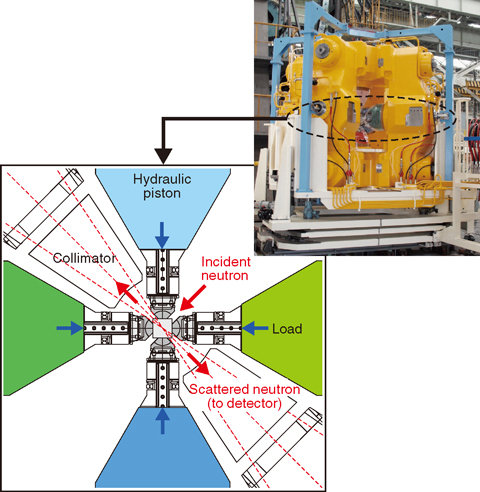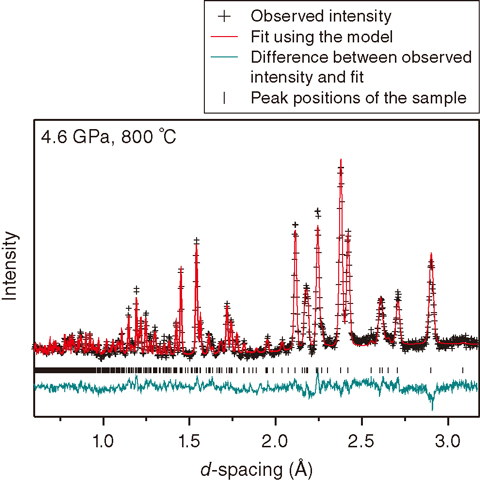
Fig.5-32 Six-axis multi-anvil press “ATSUHIME”

Fig.5-33 Neutron diffraction pattern of the hydrous mineral lawsonite
The physical properties and structures of minerals and magma change significantly under the high pressure and high temperature conditions in the Earth’s interior. In situ observation at the extreme condition is thus important for discussions of the Earth’s structure and its evolution. Neutron diffraction is a powerful probe for locating hydrogen positions in situ, which are difficult to determine by X-ray scattering.
A high pressure condition is achieved by applying force to the sample cell, while high temperature is achieved using a resistive heater in the cell. A conventional multi-anvil press applies a load to a pair of opposed guide blocks using a hydraulic piston. However, when it comes to applying neutrons, this guide block is unfavorable because it limits the “window” for detecting neutrons scattered from the sample. Moreover, the allowable pressure and temperature was limited below 7 GPa and 1000 ℃ due to insufficient thermal insulation of the small sample cell.
To overcome these problems, we have developed a six-axis multi-anvil press “ATSUHIME” (Fig.5-32). This press comprises six orthogonally aligned hydraulic pistons. The design without guide blocks allows us to enlarge the “window” for neutron scattering and to place the collimation devices near the sample.
The press has been installed in the PLANET beamline at the MLF, J-PARC. We succeeded in conducting in situ experiments at 16 GPa and 1000 ℃, corresponding to the conditions of the Earth’s mantle transition zone where water plays an important role. Thanks to the collimators, high-quality diffraction patterns are available without any parasitic scattering from the high pressure cell (Fig.5-33).
This press constitutes a new tool for understanding the role of water in the deep Earth using neutron scattering.
This study was supported by Japan Society for the Promotion of Science (JSPS) KAKENHI Grant-in-Aid for Scientific Research on Innovative Areas (No.19GS0205), and the Ministry of Education, Culture, Sports, Science and Technology of Japan (MEXT) KAKENHI Grant-in-Aid for Creative Scientific Research (No.20103001).